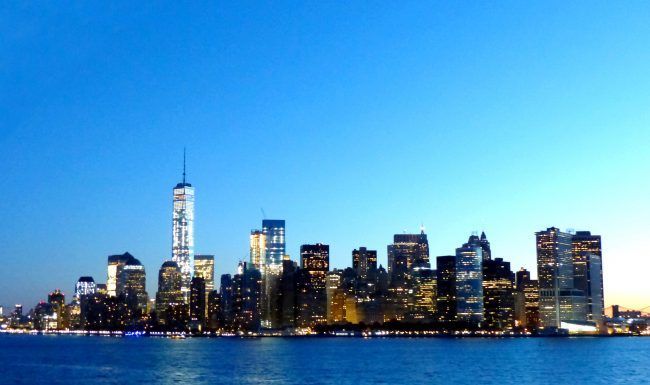Blog
Media Contact
Email: media@floodpanel.com

Cities Devise Plans to Combat Climate Change
As government leaders debate climate change, officials and community leaders in cities across the U.S. are taking action to prepare for climate change impacts they believe are inevitable.
In March, New York City Mayor Bill de Blasio proposed a $10 billion plan to build out the Lower Manhattan coastline by as much as 500 feet to protect it from frequent flooding. The area, which includes Wall Street and the South Street Seaport, suffered $19 billion in damage in 2012 when storm surge from Hurricane Sandy flooded real estate, subways and other critical infrastructure.
de Blasio described the proposal as “part of an overall resiliency plan for Lower Manhattan that includes a $500 million project to fortify the area with U-shaped expanse of grassy berms and removable storm-barriers that can be anchored in place as storms approach.”
Detractors of the plan cite concerns about its impact on the marine habitat and coastal environment. Some feel it doesn’t go far enough to protect other parts of the city vulnerable to flooding. The plan also faces additional hurdles that include coordination with Congress, the U.S. Army Corps of Engineers and other entities that may hold it back. (For more about the plan, read the Bloomberg News story www.bloomberg.com/news/articles/2019-03-14/de-blasio-seeks-to-flood-proof-lower-manhattan-by-adding-land.)
Similar proposals by former NYC Mayor Mike Bloomberg and the NYC Economic Development Corporation’s federally-funded $30 million “RISE : NYC” competition have done little to improve the city’s resiliency so far.
Neighborhood Fix
David Levy, professor of Management, Director of the Center for Sustainable Enterprise and Regional Competitiveness, University of Massachusetts, warns “beware the big fix.” His team studied the feasibility of constructing a large barrier across Boston Harbor that would deploy large gates to protect the city from storms. The plan would cost the city an estimated $12 billion over 30 years. The study determined the high cost could not be justified in the face of uncertainty about sea-level rise and global warming.
According to Levy, most resiliency projects provide no immediate benefits and are hard to sell to the public. He recommends a “neighborhood-level approach” that includes “upgrades in housing, transportation and infrastructure.” Additionally, investment by private property owners in flood protection measures like flood gates and flood doors would lessen the public burden.
Some cities have taken steps in this direction. Last year, Miami voters approved a $400 million bond to pay for resiliency projects. In Harris County, Texas, voters still rebuilding after Hurricane Harvey approved $2.5 billion for flood protection. In San Francisco, a $425 million bond to shore up a sea wall was approved. (Read Levy’s article here, theconversation.com/climate-change-resilience-could-save-trillions-in-the-long-run-but-finding-billions-now-to-pay-for-it-is-the-hard-part-108143).
Nuisance Flood Threat
It’s not just major storms that threaten cities. Frequent nuisance flooding in Atlantic City, New Jersey and Annapolis, Maryland is taking an economic toll. According to a Stanford University study, Annapolis lost as much as $172,000 due to 3,000 missed customer visits in 2017 due to flooded businesses. (Read more here, www.bdcnetwork.com/persistent-flooding-having-economic-impact-coastal-cities.)
The most vulnerable cities seem to understand that the climate is changing and they are making efforts to prepare for what’s coming. Given the intensity of recent storms, the sooner the better.
Photo credit: By Edgar El, CC BY 3.0, https://commons.wikimedia.org/w/index.php?curid=60246822

